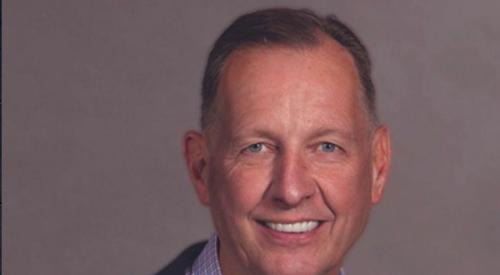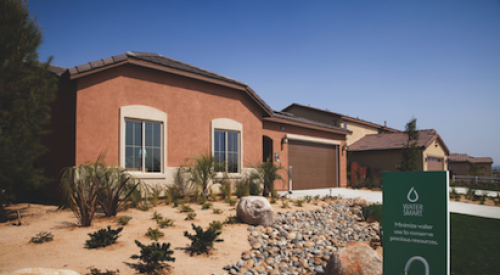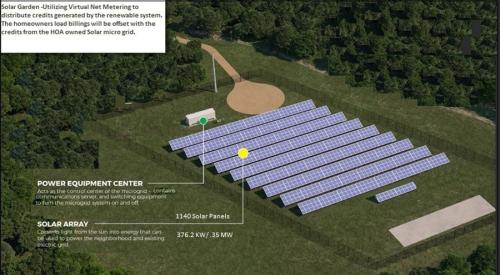|
Architect William McDonough is a radical. He also is lauded as a pioneer in sustainability, representing ideals admired by green builders.
During the past two decades, green — or sustainable — building has grown from a few scattered practitioners who have been doing it for years to more mainstream builders who have recently taken on the mantle. Twenty-eight percent of respondents in Professional Builder’s second annual State of Green Building Survey said three-quarters of their units built were green.
Still, McDonough contends that even though home builders are doing much better than they were, the industry — and almost every industry and entity in American society — is only scratching the surface of sustainability. The ultimate optimist, McDonough says he has solutions on the table and the drawing board that blow the status quo out of the water. But his path to change is on a plane completely different from most — rather than efficiency, which most builders strive for, McDonough champions effectiveness.
The current model of eco-design is eco-efficiency, or “doing more with less,” McDonough contends. But that model only means using fewer trees, generating less pollution, consuming less fossil-fueled electricity, and recycling or “downcycling” products into lesser-quality products than their originals — in other words, doing better within an already flawed system. The philosophy is much different at William McDonough and Partners, a 40-member architecture firm in Charlottesville, Va., and at McDonough Braungart Design Chemistry, a company run by McDonough and German chemist Michael Braungart that designs — and redesigns — everything from upholstery fabrics and carpets to hair gels and tennis shoes that are better for people and the earth.
“What we’re saying is efficiency isn’t necessarily good, because it has no value,” McDonough says. Using less within the existing system only takes away value, adding none. He says industries, including home building, need to look to new products that benefit the earth rather than strangle it more slowly.
“The question isn’t ‘Am I doing something right?’ it’s ‘Am I doing the right thing?’” McDonough says. “To make the wrong thing more efficient might be pernicious because it perpetuates the wrong system. We’re looking at eco-effectiveness — doing the right thing and doing it efficiently.”
He points to the push for greater energy efficiency in buildings, which often means minimizing air leakage. Less fossil fuel is burned, but toxic substances in those buildings aren’t replaced with safe ones. Products containing formaldehyde, a carcinogen, and polyvinyl chloride, which produces toxic chemicals when burned, are still put into homes, possibly affecting indoor environmental quality.
So what is effectiveness? McDonough answers that question with an analogy: A cherry tree’s hundreds of dropped blossoms are inefficient — many “wasted” blossoms don’t produce new trees — but they are effective because they nourish the soil. Nature’s effectiveness runs contrary to the built world’s cradle-to-grave paradigm, but McDonough’s life’s work involves making the cradle-to-cradle model work for human industry as well as nature.
What if you could “take a piece of dirt and build something that could make oxygen, sequester carbon, fix nitrogen, distill water, accrue solar energy, change colors with the season, be a habitat for thousands of species and make more energy than it uses?” he asks. “That’s a honey locust. What if we could build houses like trees?”
| "To make the wrong thing more efficient might be pernicious because it perpetuates the wrong system." |
The possibilities for more effective land development, homes and businesses are expanding. Solar energy collectors, green roofs planted with a layer of vegetation to cut down solar gain and catch and filter rainwater, proper solar orientation of buildings, operable windows as part of ventilation systems — all of these can be used toward the goal of sustainability.
Coffee Creek Center in Chesterton, Ind., for which McDonough and Partners created the urban plan and design guidelines, is a prime example of his ideas at work. Lake Erie Land Co.’s 640-acre, master-planned community includes neo-traditional commercial and mixed-income residential components, as well as the 167-acre Coffee Creek Water Conservancy, which runs down the middle. On this former farmland, green space was set aside; wetlands, prairies and wet prairies were restored or re-created; the eroded banks of Coffee Creek were re-sloped to allow for natural overflow; and wetland buffer areas were constructed to mitigate the effects of surrounding farm runoff into the creek, all with the goal of restoring pre-settlement hydrology to much of the site.
Two thousand-plus multifamily and single-family homes are projected for the development, with models already open and five other units already built. Calumet Construction, which has just begun construction on the first 38-acre parcel, is offering packages featuring paints and carpets low in volatile organic compounds, floors made of bamboo (a quickly renewable wood alternative), and other options in the five-star Energy Star-rated homes.
For a current project in Virginia, McDonough uses what he calls anticipatory design as he waits for technology and economy to align. That home is ready to accept solar-energy-harnessing technology, making the home responsible for producing the energy the owners need, as soon as it is cost-effective.
Waiting for solar to be financially viable is another of McDonough’s principles: “My strategy is to use business as the agent of change. The triad of sustainable development is economy, equity and ecology.
“We understand that extremes are dangerous. If you’re a finger-wagging greenie, you might forget some social purpose or economic reality. We honor capitalism by saying if it isn’t profitable, don’t do it. If businesses are not thriving, I can’t change them. We look at how to balance these things and make them all fabulous, not just one sector.”











